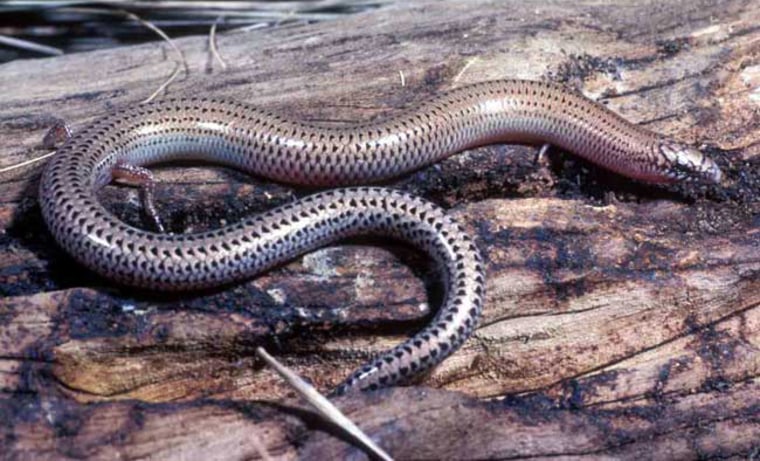Some slender Australian lizards called skinks have gone from being five-fingered to legless (like most snakes) in just 3.6 million years, a new study finds. That's a blink of an eye in geologic time.
For comparison, if a 1,000-sheet roll of toilet paper represented all of Earth's geologic history, it is only on the last square of paper that bipedal ancestors of showed up — about 4.5 million years ago, said Penn State geologist Robert Giegengack, who was not involved in the study.
There are 75 species of these fast-evolving skinks called Lerista. These skinks have been crawling and slithering around Earth for about 13.4 million years, and even today, some have five fingers, some have four and some have none, or tiny stubs for legs. So researchers from the University of Adelaide used genetic sequences to arrive at a new family tree for the skinks that showed when and how fast they had lost their fingers or entire legs throughout their evolution.
"At the highest rate, complete loss of limbs from a pentadactyl [five-fingered] condition is estimated to have occurred within 3.6 million years," said researcher Adam Skinner of the University of Adelaide, adding that compared to similarly dramatic evolutionary changes in other animals, this is blisteringly fast.
The analysis, detailed in the journal BMC Evolutionary Biology and funded by the Hermon Slade Foundation, suggests that the skinks’ way of life might have driven the dramatic and rapid changes in their body shapes.
"It is believed that skinks are losing their limbs because they spend most of their lives swimming through sand or soil; limbs are not only unnecessary for this, but may actually be a hindrance," said Skinner, who headed up the study.
Skinner and his colleagues found that the evolution of a snake-like body form in Lerista skinks has occurred not only repeatedly but without any evidence of reversals (that is, fingers or limbs being added back).
Limb reduction via evolution has occurred many times during the history of life on Earth, in mammals, birds, amphibians, snakes and lizards. Lizards and snakes are the model cases for study of this biological phenomenon. About 53 lineages of lizards and snakes are known to have lost one or more bones of their limbs throughout their evolution, Skinner said.
